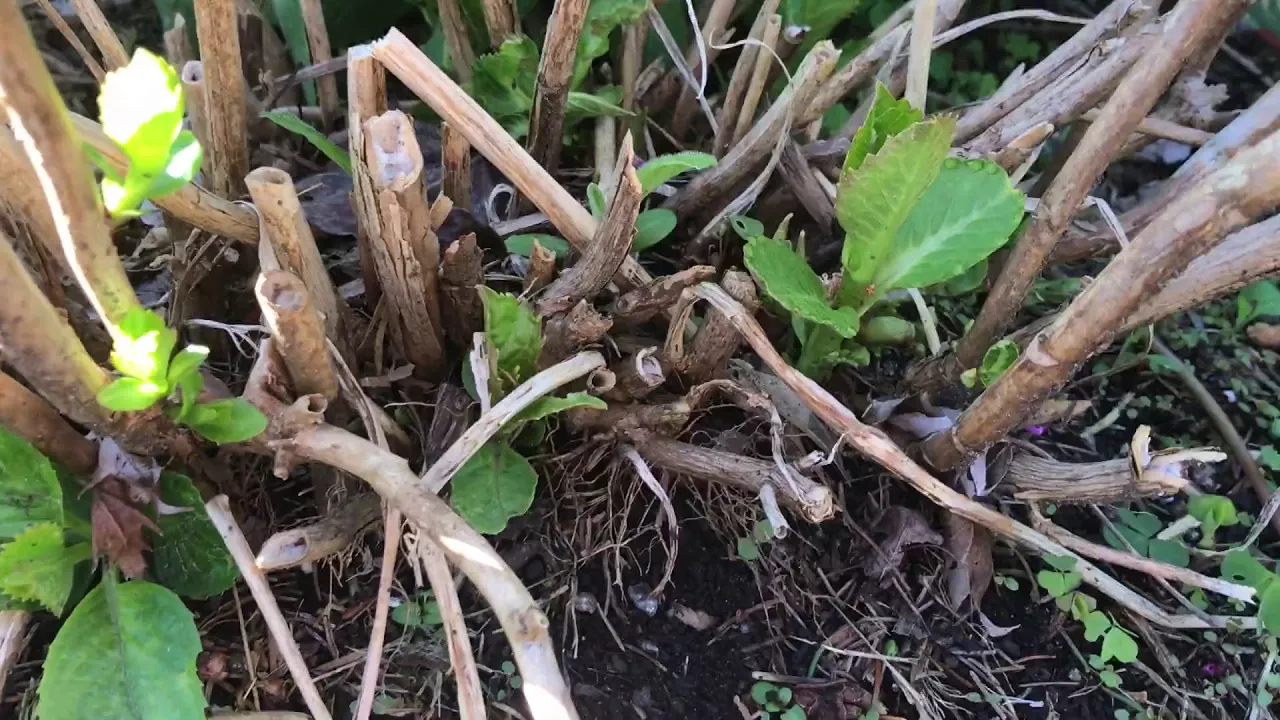Learn the different kinds of hydrangeas including five main types. For more information on how to care for hydrangeas, click here.
(Some of the links within this post are affiliate links on which I receive a small compensation from the sale of certain items with no extra cost to you.)
(As an Amazon Associate I earn from qualifying purchases.)
Old Wood Vs. New Wood
There are 5 basic varieties of hydrangeas. A major distinction between them is whether or not the buds form on old wood or new wood. Knowing the variety you have will determine when, if ever, to prune your plant. I say if ever because hydrangeas do not need to be pruned in order to bloom and thrive. However, if the plant is getting too large for an area or becoming too thin, then you may want to prune it.
Old wood refers to the growth from previous years that appears almost like dead sticks. Most of these sticks are not dead and form beautiful buds for the next flowering season. If you prune these kinds of hydrangeas in the spring or fall, you will be cutting off buds for the next year. Hydrangeas which contain old wood should only be pruned after they have bloomed in the summer.
New wood refers to new growth protruding from the bottom of the plant each year. Since the buds form on this growth, they can be pruned in late winter or early spring before growth begins.
The Five Kinds of Hydrangeas
Climbing Hydrangeas (Hydrangea petiolaris)
Climbing hydrangeas, which are native to Asia and the Northern Hemisphere, are vines that cling to the side of structures without the use of a trellis. To attach themselves to structures they use suckers which grow on the leaves. They can grow up to 80 feet tall and are slow growers. Unlike other species of hydrangeas, climbing hydrangeas need to mature 3 to 5 years before producing their first blossom. Once mature, their white, lacey blooms will bring you joy throughout June and July. They have a wonderful fragrance which some describe as a rich honey-vanilla or a combo of green apple and cucumber. Climbing hydrangeas attract bumble bees and honeybees.
Climbing hydrangeas bloom on old wood so it is not necessary to prune. They are hardy to USDA zone 4.

Warning: All parts of a hydrangea plant is poisonous to dogs, cats, other pets.
Smooth hydrangea (Hydrangea absorbescens)
The smooth hydrangea, sometimes referred to as a wild hydrangea, can be found growing in partial shade to full sun and is native to the eastern United States. If the temperatures are consistently hot, they will thrive in morning sun and shaded afternoons. These compact shrubs have creamy white flowers and grow 3 to 5 feet tall. The smooth hydrangea blooms from early summer into fall.
Smooth hydrangeas bloom on new wood, therefore they can be pruned in late winter or early spring. They are hardy to USDA zone 3.
These hydrangeas are not sensitive to the pH in the soil and are unchangeable in color. They will stay white.

Oakleaf hydrangea (Hydrangea quercifolia)
This variety of hydrangea can be found in the southeastern parts of the United States. They thrive in hot locations, grow as shrubs, and have white, green or purple blossoms. In the fall, their leaves change from green to red or purple. Their foliage is in the shape of an oak leaf, hence the name.
This type of hydrangea blooms on old wood therefore do not prune. Oakleaf hydrangeas grow for 5 years before they begin to bloom and are hardy to USDA zone 5. They may need to be protected in winter if they are exposed to harsh winds or are in an open area.
Bigleaf, or French hydrangea (Hydrangea macrophylla)
Bigleaf hydrangeas are the most commonly seen hydrangeas in gardens throughout the United States.
These hydrangeas are the typical mop-head blossoms (puffy balls), lace cap (puffy with tiny lace-like buds in the center), and mountain variety (similar to lace cap but extremely cold weather hardy with smaller blossoms). They also bloom throughout the summer and into the fall.
The mop-head and mountain variety can be forced to change color. For more on how to change the color of hydrangeas, click here.
Bigleaf hydrangeas bloom on old wood and do not need to be pruned. Protect them if there is a late frost because you do not want the early buds to be damaged.


Panicle hydrangea (Hydrangea paniculata)
This variety of hydrangea is native to Russia, Japan, Korea, and southern and eastern China. These beauties have blossoms of white, or shades of pink or green, and will also grow two-toned. They grow best in full sun in the north and afternoon shade in the hotter temperatures of the south. The panicle hydrangea will also survive in dappled sunlight under a thin canopy of trees.
Varieties of panicle hydrangea can be groomed to grow up to 25 feet tall. These grandiflora varieties include the “limelight”, “firelight”, “bobo”, and “pinky winky”. The colors of the blossoms on a panicle hydrangea will not change.
Most panicle blossoms have a conical shape to them. The top of the flower comes to a slight point unlike others that are more rounded or flat.
Panicle hydrangea bloom on new wood after approximately 2 years and thrive in up to USDA zone 3. Prune this variety in late winter or early spring.

What is the Most Durable Hydrangea?
The most durable and easy to grow hydrangea is the panicle variety. It is the most cold hardy of the hydrangeas and has blossoms at least 6 to 8 inches long and longer! They bloom well into the fall, after other varieties have stopped blooming.
The panicle can grow in full sun to partial shade. It can be trained to grow as a single stemmed plant or multi-stemmed shrub. This versatile hydrangea will perform better than any other type of hydrangea.
What Hydrangeas Bloom Year Round?
The endless summer variety of bigleaf mop-heads bloom on both old and new wood. Thus, they have more opportunity to bloom well into the season and beyond. They too grow in zones 4 through 8 and are common in the south and other areas.
Endless summer hydrangeas thrive in partial shade as long as they get direct unfiltered sunlight for 4 hours each day.
They do not need to be pruned since they grow on old and new growth, but be sure to cut out any dead or diseased limbs.

Kinds of Hydrangeas – Five Main Types
After reading this post I hope you are able to identify the kind of hydrangea you have in your own backyard. When selecting a hydrangea, take into consideration the sunlight requirements and its growing habits.
Hydrangeas remind me of bygone summers full of lazy days, cold iced tea, and lounging under a canopy of trees while feeling a cool breeze rush over my face. If you don’t already have some hydrangeas, it’s time you planted one or more in your yard to add to that special oasis you are creating!
Happy Gardening,
Nina




